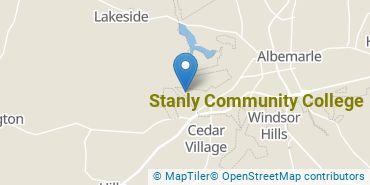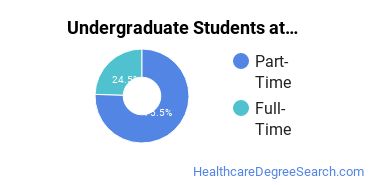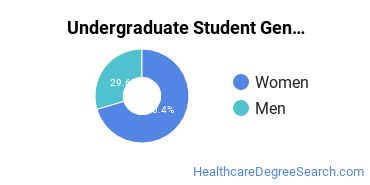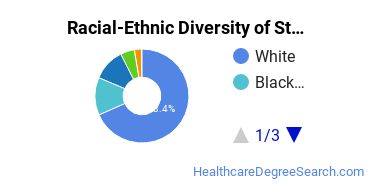Stanly Community College Healthcare Programs
Stanly Community College is a public institution located in Albemarle, North Carolina. The charming, small-town atmosphere of Albemarle draws many to the area.
Featured schools near , edit
Where Is Stanly Community College?

Contact details for Stanly Technical College are given below.
| Contact Details | |
|---|---|
| Address: | 141 College Drive, Albemarle, NC 28001 |
| Phone: | 704-982-0121 |
| Website: | www.stanly.edu |
How Do I Get Into Stanly Technical College?
You can apply to Stanly Technical College online at: www1.cfnc.org/applications/nc_community_college/apply.html?application_id=1528
Can I Afford Stanly Community College?
Stanly Community College Undergraduate Student Diversity

Gender Diversity
Of the 449 full-time undergraduates at Stanly Technical College, 26% are male and 74% are female.

Racial-Ethnic Diversity
The racial-ethnic breakdown of Stanly Community College students is as follows.

| Race/Ethnicity | Number of Grads |
|---|---|
| Asian | 10 |
| Black or African American | 69 |
| Hispanic or Latino | 28 |
| White | 294 |
| International Students | 6 |
| Other Races/Ethnicities | 42 |
Stanly Community College Healthcare Concentrations
The table below shows the number of awards for each concentration.
| Major | Basic Certificate | Associate’s | Undergraduate Certificate | TOTAL |
|---|---|---|---|---|
| Medical/Clinical Assistant | 15 | 14 | 17 | 46 |
| Registered Nursing | 0 | 22 | 0 | 22 |
| Other Mental and Social Health Services and Allied Professions | 6 | 8 | 1 | 15 |
| Radiologic Technology | 0 | 10 | 0 | 10 |
| Respiratory Care Therapy | 0 | 9 | 0 | 9 |
| Emergency Medical Technology/Technician (EMT Paramedic) | 0 | 3 | 0 | 3 |
| Laboratory Technician | 0 | 1 | 0 | 1 |
| Substance Abuse/Addiction Counseling | 0 | 1 | 0 | 1 |
| Pre-Nursing Studies | 0 | 0 | 0 | 0 |
| TOTAL | 21 | 68 | 18 | 107 |
References
*The racial-ethnic minorities count is calculated by taking the total number of students and subtracting white students, international students, and students whose race/ethnicity was unknown. This number is then divided by the total number of students at the school to obtain the racial-ethnic minorities percentage.
More about our data sources and methodologies.
